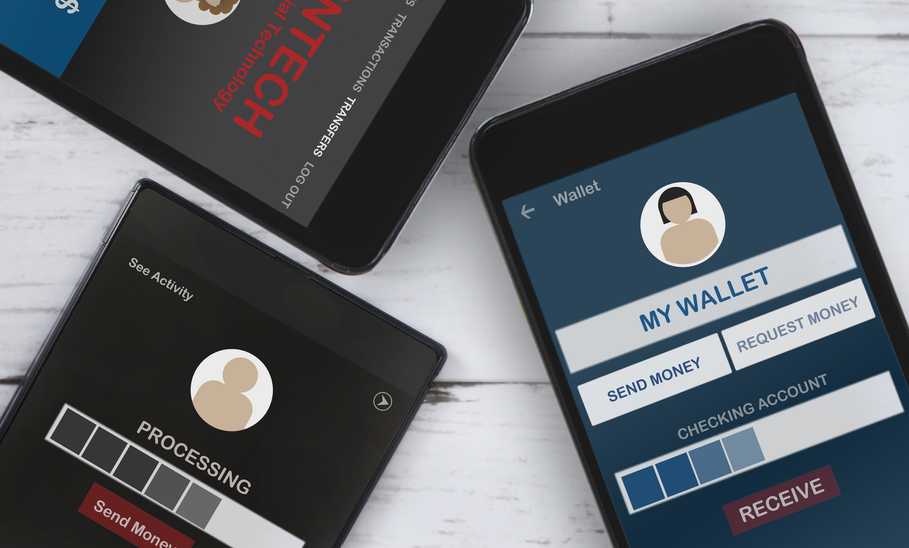- P2P lenders are more likely to accept borrowers with less-than-ideal credit histories
- Loans can be funded quickly
Peer-To-Peer Lending: What It Is, How It Works, And How to Invest In It


Our evaluations and opinions are not influenced by our advertising relationships, but we may earn a commission from our partners’ links. This content is created by TIME Stamped, under TIME’s direction and produced in accordance with TIME’s editorial guidelines and overseen by TIME’s editorial staff. Learn more about it.
Peer-to-peer, or P2P, lending is a modern alternative to a traditional bank loan. But is a P2P loan a good fit for you? Learn more about how P2P loans work, how they differ from traditional personal loans, and how to become a P2P investor.
Peer-to-peer lending, also known as P2P, is a form of lending that connects the lender directly to the borrower through a P2P website. P2P lending offers an alternative to traditional bank lending and can be beneficial for borrowers who may have trouble qualifying for a loan through a traditional lender. It can also offer borrowers with good credit scores a lower interest rate.
Peer-to-peer lending is an online transaction between a lender and a borrower. The two parties connect through an online P2P lending platform, such as Kiva, Prosper, or Upstart. The lender—an investor or group of investors—collects interest on the loan. At the same time, the borrower can use the funds to consolidate debt, finance home improvements, buy a car, launch a small business, refinance a student loan, and more.
Like traditional lenders, P2P lenders consider the borrower’s debt-to-income ratio and credit scores when deciding whether to offer a loan. However, P2P lenders often have more relaxed eligibility requirements than traditional lenders, which can be helpful to people with poor or fair credit scores. Investors don’t have to invest in whole loans. Instead, they can buy “notes,” which are fractional shares of a loan in denominations as low as $25.
As with any type of loan, P2P lending comes with advantages and disadvantages. The following table breaks down the main pros and cons of P2P lending.
There are many possible uses for a P2P loan. The most common type of P2P loan is a personal loan, though there are plenty of other options to help finance things like a car purchase, home purchase, and medical procedures.
Several online marketplaces offer P2P loans. Listed below are some top P2P websites to consider, as well as some loan details.
| Lender | Loan Amounts | Loan Terms | APR Range |
|---|---|---|---|
Upstart | $1,000 to $50,000 | 36 to 60 months | 7.8% to 35.99% |
LendingClub | $1,000 to $40,000 | 24 to 60 months | 9.57% to 35.99% |
Prosper | $2,000 to $50,000 | 24 to 60 months | 8.99% to 35.99% |
Happy Money | $5,000 to $40,000 | 24 to 60 months | 11.72% to 17.99% |
Avant | $2,000 to $35,000 | 12 to 60 months | 9.95% to 35.99% |
There are several differences between getting a loan from a P2P lender and getting a loan from a bank. The biggest differences include qualification requirements, application process, funding sources, and interest rates.
Each bank and P2P lending platform will have different qualification requirements, but generally, P2P lenders will have less stringent qualification requirements. That means borrowers who have a short credit history or a poor or fair credit score may have a better chance of being approved for a loan from a P2P lender than from a bank or credit union.
If you’re worried you won’t be approved for a bank loan due to your credit score, a P2P loan might be the better option for you.
Most modern banks have an online application process for loans, but some may still require in-person applications, which could rule out borrowers who are unable to visit a bank branch in person. The application process for a P2P loan can also be shorter—though it will depend on the lender.
P2P lenders often have a simpler application and underwriting process, which means faster loan funding. If you need money urgently, a P2P loan might be the right choice.
The main difference between traditional bank loans and P2P lenders is the funding source. When you’re approved for a personal loan through a bank, the bank itself will fund the loan. But with P2P lending, the loan is funded by a private individual lender or a group of lenders, and the P2P marketplace connects lenders with borrowers.
Borrowing from a bank has its advantages, including programs designed to help borrowers through financial hardships. In other words, if you lose your job and cannot make payments on your loan, the bank may have a program in place to help you avoid default. P2P lenders are less likely to have such programs in place, which increases your risk of defaulting on the loan.
Finally, traditional loans and P2P loans tend to differ when it comes to interest rates. Borrowers with good or excellent credit scores may find that they can get comparable interest rates with banks or P2P lenders. Those with poor or fair credit scores, however, may pay a higher interest rate on a loan through a P2P lender than with a traditional lender.
It’s important to note that borrowers with a poor credit profile may not qualify for a loan through a traditional lender; in this case, they will likely have to go with the higher interest rate through a P2P lender if they need a loan.
Instead of borrowing from a P2P lender, you can participate as an investor and lend money through P2P platforms. If you’re considering becoming a P2P lender as a means of investing your money, there are several factors to keep in mind.
If you decide to invest money in P2P lending, there are several ways to diversify your portfolio and minimize your risk, such as the following.
Interested in getting started with P2P loans? Choosing the right platform can seem challenging, as P2P lending has grown into a multibillion-dollar industry and offers numerous opportunities for both individual investors and borrowers. To name a couple Upstart provides a user-friendly platform for investors who want to get started in P2P lending. According to Upstart, investors will see a gross average return of 11.8%, depending on their risk tolerance. Prosper is a good option for investors who prefer to be hands-off. Auto Invest allows you to choose pre-set investment mixes or customize your preferred investment mix, and then Prosper takes care of the actual investing.
P2P loans are a good alternative to the traditional bank loan for many borrowers, but that doesn’t mean it’s the only alternative. It’s a good idea to explore all of your options before settling on the best one for you. Here are some P2P lending alternatives for you to consider.
If you have a good credit score, a traditional personal loan may be a better option. Check your local banks and credit unions, as well as researching options with online banks. It’s fairly easy to shop around for a personal loan to compare rates and loan terms and find the best fit for your needs.
Another option for those with decent credit is to open a credit card. If your credit score is high enough, you may even qualify for an introductory offer, such as 0% APR for the first one or two years, to lower the cost of borrowing. As with traditional personal loans, it’s smart to shop around and compare credit card offers to find the best one for you.
There are several options when it comes to lines of credit. If you own your home and have enough equity, you may qualify for a home equity line of credit. You might also consider a personal line of credit if you don’t own a home—this is similar to a credit card but may require you to put down some sort of collateral. Lines of credit work similarly to credit cards—you’re granted a credit limit and can borrow up to that limit. As you pay down your balance, you can continue borrowing up to that amount.
If you’ve exhausted your loan options, consider speaking to a trusted family member or friend to see if they would be willing to loan you the money you need. Just make sure you have a solid plan to pay them back—borrowing from a loved one can result in a broken relationship if you fail to pay them back in a timely manner.
When you think of a personal loan, you probably think of borrowing from a traditional lender such as a bank or credit union. However, P2P lenders can also fund personal loans and offer several advantages. If your credit score is less than ideal, you may have an easier time qualifying for a loan through a P2P lender. And if you’re an investor, P2P lending provides a unique way to diversify your portfolio and ensure steady income from your investments.
P2P lending can be riskier than traditional lending. That’s because there’s a higher risk of default, so lenders are more likely to lose money. In exchange for the additional risk, however, P2P lenders usually charge a higher interest rate, which can help offset the risk of losing money.
The first step toward borrowing money from a P2P lender is to apply through a P2P website. Many P2P websites have a prequalification process that allows you to see whether you’re likely to be approved without it affecting your credit. If your application is approved, your loan will usually be funded quickly through electronic fund transfer. You’ll then need to repay the loan in monthly installments that include both principal and interest.
It’s certainly possible to make money through P2P lending—especially if you are careful about only lending to seemingly trustworthy borrowers. Many P2P websites allow you to set specific qualifications that borrowers must meet, and you can review each application before approving it if you choose. However, like with any type of investment, there’s always a chance that you may lose money, so make sure you understand the pros and cons before you decide to invest in P2P loans.
The information presented here is created by TIME Stamped and overseen by TIME editorial staff. To learn more, see our About Us page.



